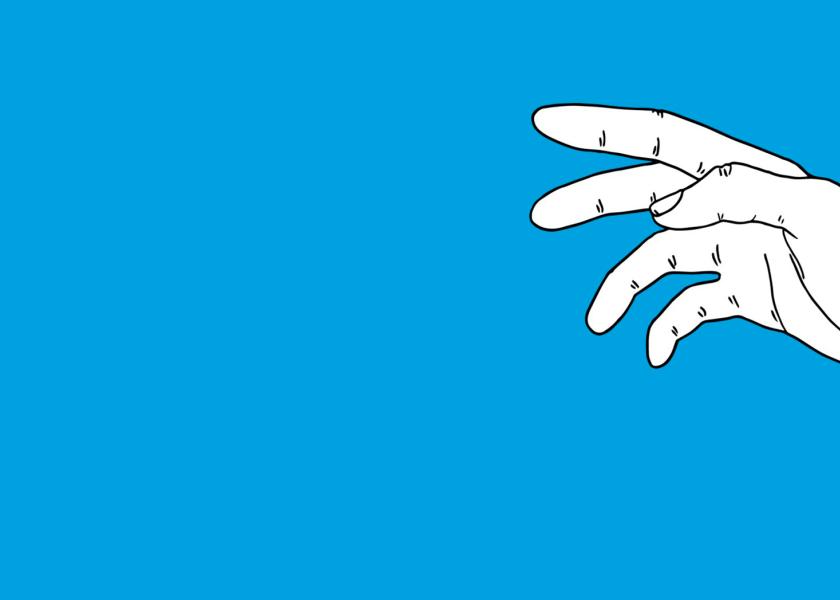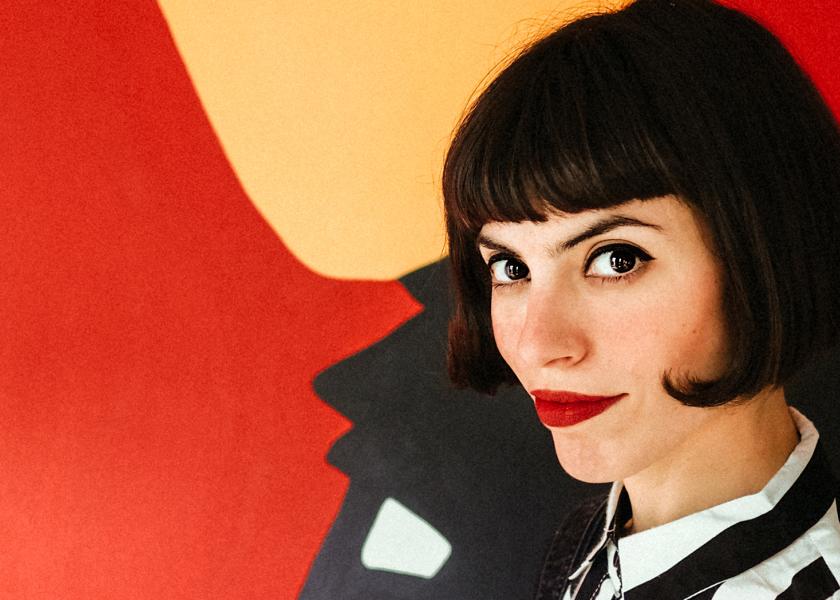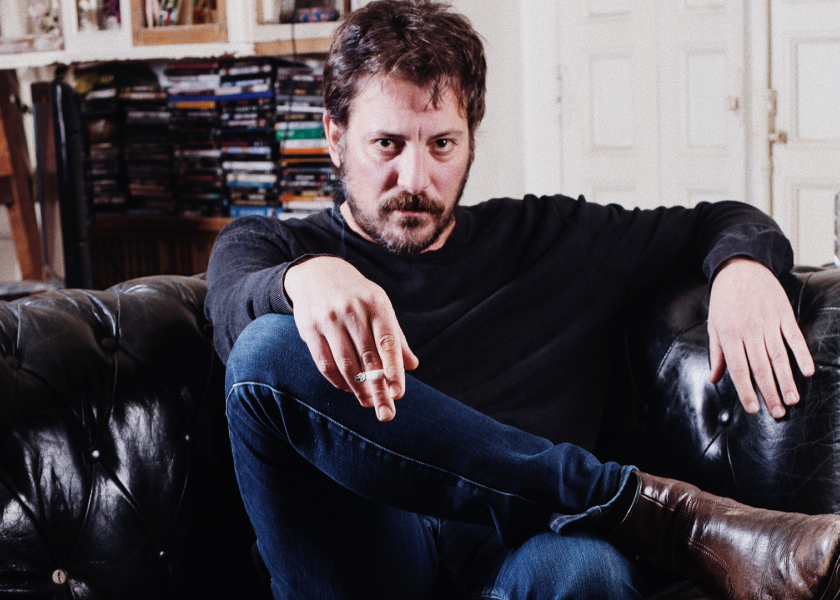Aitor Saraiba
Poems and Drawings with Healing Powers
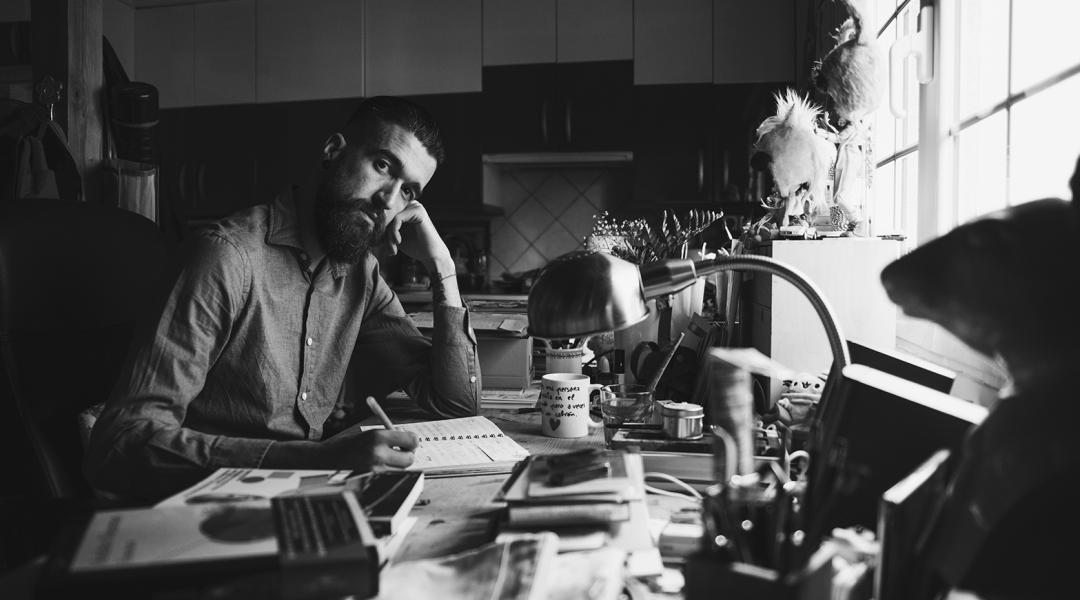
Borges and Bolaño are his great influences, but Aitor Sarabia’s field of action goes beyond literature. A creator above anything else, he’s a total artist that conjures up magic in his work, lending it a healing power. His latest book is a good example of this.
Aitor Saraiba (Talavera de la Reina, 1983) uses several means of expression. He writes, takes photographs, draws, paints, and moulds ceramics, depending on what he needs to convey at any given moment. A restless soul, he has lived in Los Angeles, Mexico, Guinea-Conakri, Barcelona, and Madrid, where he currently resides. Considered one of the most sought-after Spanish illustrators of the moment, Aitor Saraiba is also the author of a series of books combining stories and drawings, magic and poetry, innocence and darkness.
His new book, Me encanta cuando tus garras acarician mi alma (I love it when your claws caress my soul), halfway between prose and verse, recounts a tortuous love relationship between two men, a book in which the author and the narrator are the same person.
The book is very sincere. However, there is no trace of resentment in its pages.
You can't write from resentment or pain; you have to be healed so the reader can identify with what you are saying. Otherwise, it would be no different than a WhatsApp message written and sent with anger.
The fact that the narrator is a male’s voice unafraid of vulnerability is noteworthy.
If I show myself like this, I encourage the reader to feel likewise. Some people who have read my books tell me they have felt embarrassment. I feel the opposite. We bear many masks, we live far apart from each other, with borders of all kinds between us. If we don't show ourselves the way we are...
This book was written in solitude and is meant to be read in solitude. I’ve put a lot of thought into it, I’ve let it ripen, so whoever reads it has to be generous with their time and has to come near to what I’m saying. You can send a message of vulnerability without baring your soul; but if you do, the reader must respect that intimacy.
“In Almodóvar’s All About My Mother, there is a line that says: when God hands you a gift, he also hands you a whip; and the whip is intended for self-flagellation solely”
You’ve said something about healing, a term the speaks of almost every facet of your work.
This kind of autobiographical book usually stirs something in the person who writes it but also in the people who appear in the book. In that sense, I’ve discovered that sometimes these characters continue to interact with you beyond the book, which is something that doesn’t happen in fiction. The soul can also heal through art.
You also carry out workshops in which art acts as a healing process.
There are always projects coming out of these workshops. People realize that, if by drawing or by writing they can put some order to their lives, there is an emotional healing in that. If you want to cook and your kitchen is a mess of dirty dishes, you have to clean first. I always invite readers and people coming to my workshops to put the pieces in order. Sometimes I’m asked why I don't write fiction, but the thing is, I find too much inspiration in everyday life. I always say this in my workshops: don't look outside, there’s a lot inside.
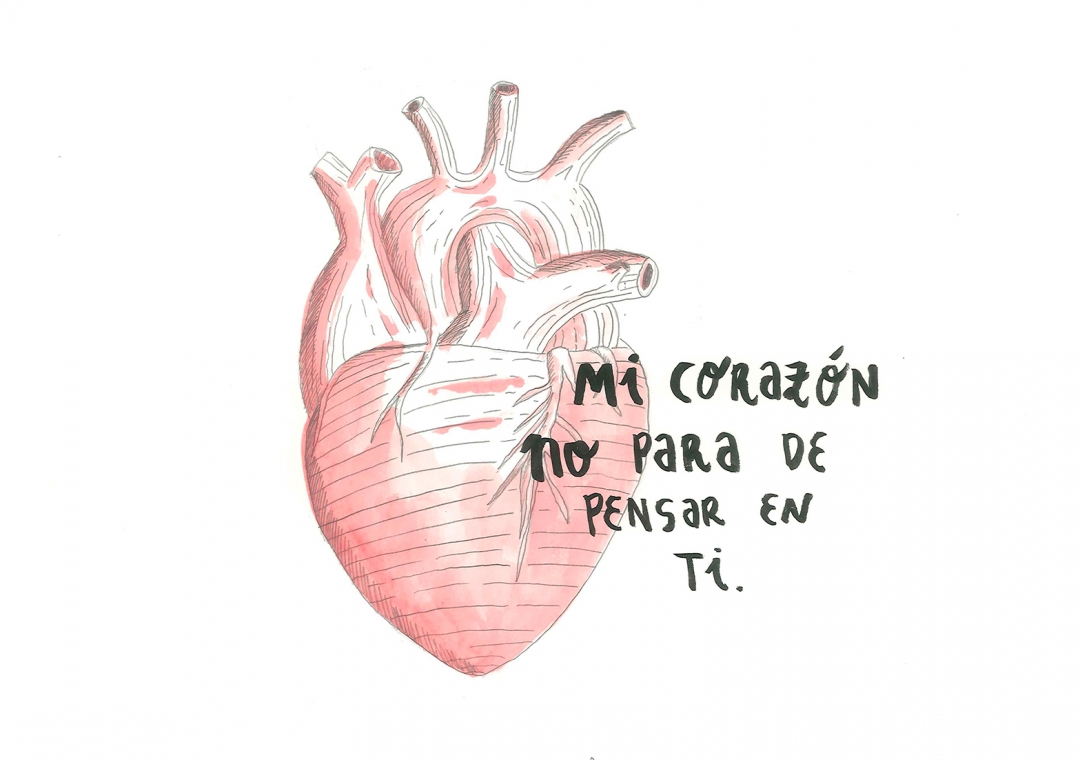
Illustration No para de pensar en mí, by Aitor Saraiba. © Courtesy of the artist
Literature is essential to you. From what author have you learned the most?
Bolaño is like my great teacher. I started reading him when I was 20, on my way to Tijuana, after 2666 was published. I like authors like Andrés Neuman, Luisgé Martín, Marcos Giralt and Miguel Ángel Hernández -El dolor de los demás is amazing. They all belong to the autobiographical genre, and maybe that's why I'm so interested in them. What I learned from Bolaño is to never give up. Until 1998, he wasn’t regarded as a great writer, and he died in 2003. Nobody paid attention to him, but he kept on working and writing even when he knew he was dying. He never gave up. He wrote most of his books while working as a night guard at a campsite. I’ve learned a lot from his way of being in the world.
About Bolaño, you wrote a book illustrated by Paula Bonet titled Por el olvido (Lunwerg). Why didn’t you illustrate the book yourself?
I was very clear I wasn’t going to illustrate Por el olvido because my drawing style didn’t fit in with the words. It was Paula Bonet, who always showed a lot of interest in the evolution of the project, who insisted that I publish it. I accepted on the condition that she illustrated it herself. Otherwise, it would have never been published.
You also have two shelves full of books by Borges.
Borges is really something. He is the great sorcerer of universal literature, possibly the most important writer in Spanish of the 20th century, and yet he never published a single novel.
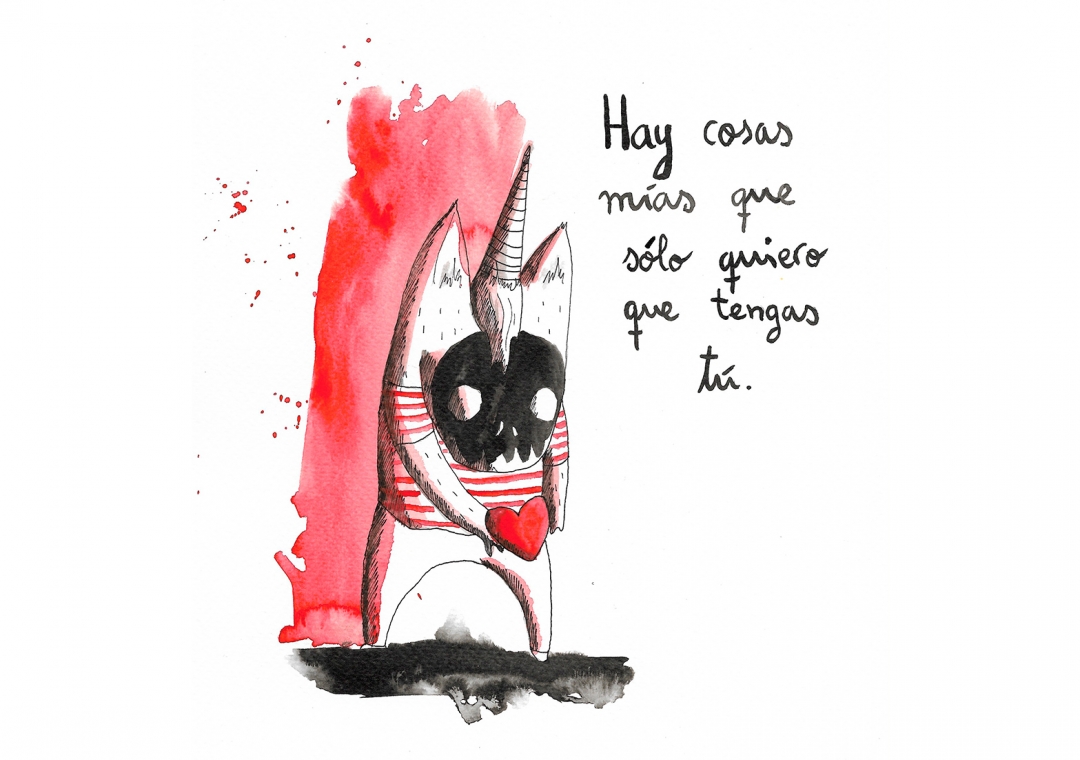
Illustration 'Cosas mías', by Aitor Saraiba. © Courtesy of the artist
It’s kind of hard to believe that you started writing and drawing by chance.
Culture wasn’t an option in the environment in which I grew up. But life is always smarter, and it never ceases to show you what you came here for. In Almodóvar’s All About My Mother, there is a line that says: when God hands you a gift, he also hands you a whip; and the whip is intended for self-flagellation solely. For every flagellation I inflict to myself, I publish at least one book.
Do you express with illustrations what you can’t explain with words?
The fact that I’m an illustrator is pure coincidence. From the beginning, there were things I could only write about and things I could only draw. I don’t use colours in a gratuitous manner--if I use a particular shade it’s because that’s the shade I need; it’s like a word.
We know about your literary influences, but what about your influences as an illustrator and as a painter?
I’d say David Hockney is one of my favourite painters, but you won’t see that influence in my drawings; I’m very far from him. But his most simple work inspires me a lot.
Nacho Vegas asked you to design the cover for one of his singles. Is there any other musician you would like to design a cover for?
There are many. I’d love to make cover art for Nick Cave, The Cure, Morrissey... although we're mad at him now, his gone out of his mind. A few years ago, while living in Los Angeles, I worked on a photographic project about Morrissey’s Latino fans.
Of all the places you’ve lived, which one has inspired you the most?
Mexico. It’s incredible, inexhaustible. It’s a country that believes in death and magic, and not so much in their politicians. It’s in their way of life. Magic to me is everything; magic is art. Modern-day magicians hide in contemporary art; there’s art that is closer to magic than plastic arts.
“Modern-day magicians hide in contemporary art; there’s art that is closer to magic than plastic arts”
What do you think is your greatest talent?
Knowing how to forgive, I think. I’m very good at forgiving, especially at forgiving myself, which is something I encourage everyone to do.
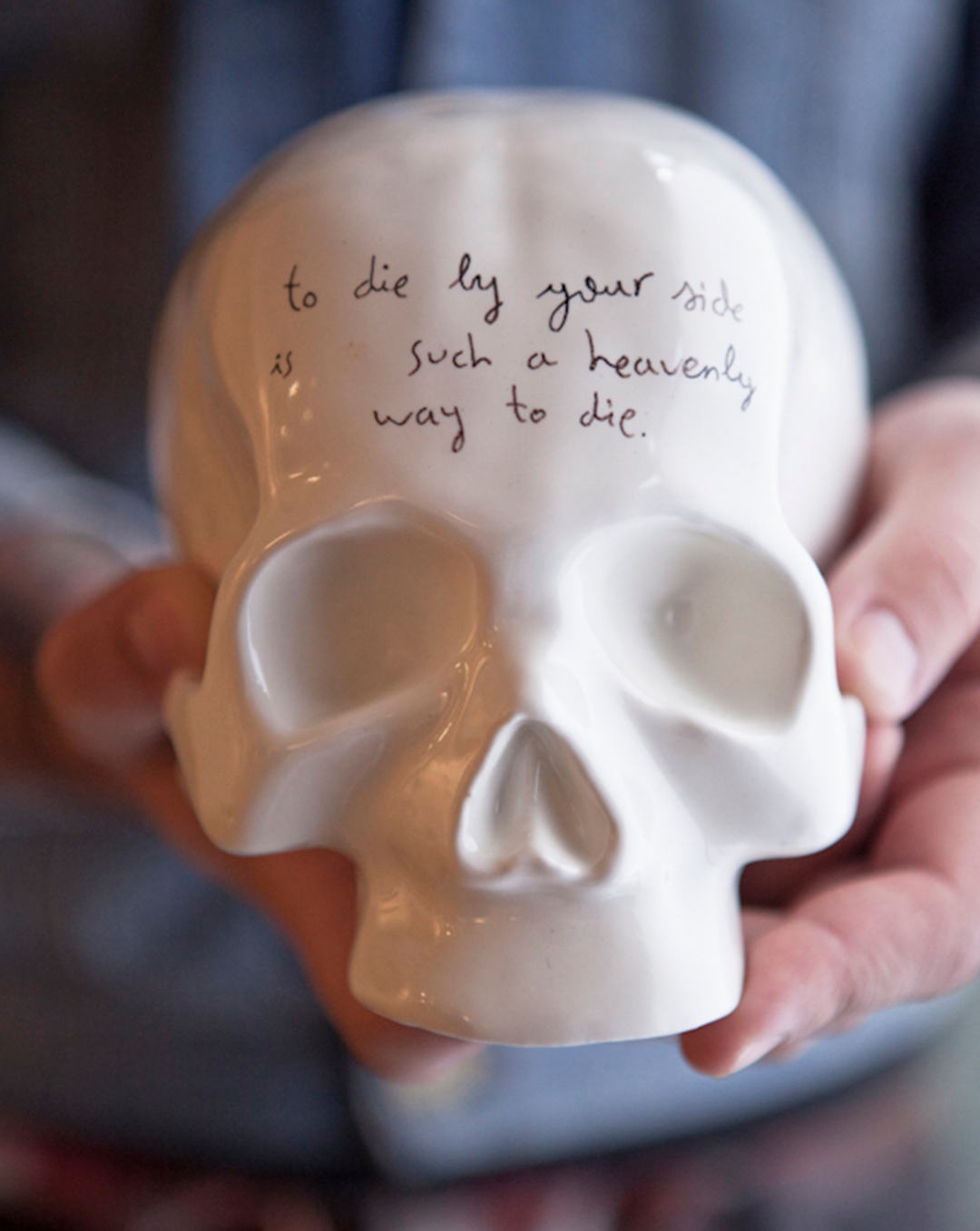
A skull sculpture with a line by The Smiths. © Courtesy of the artist
